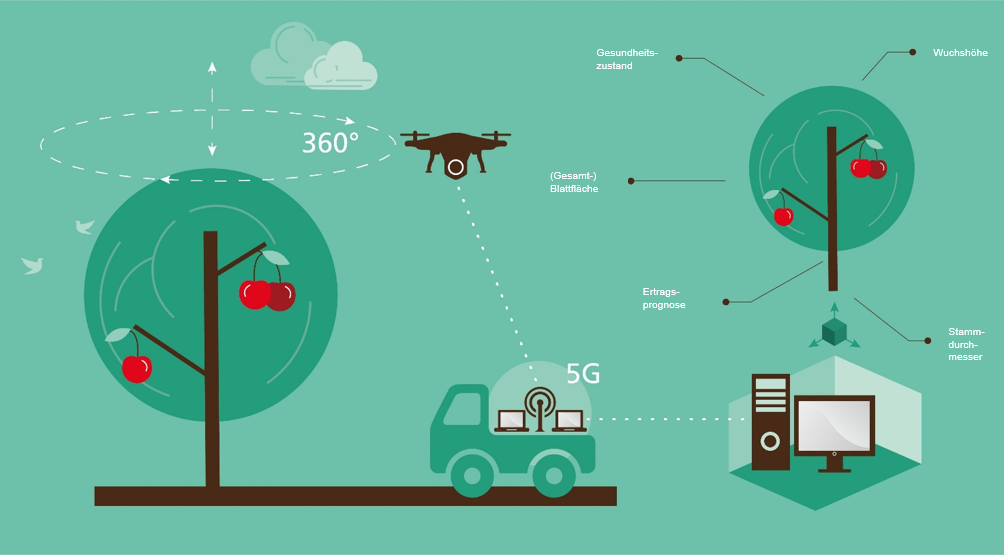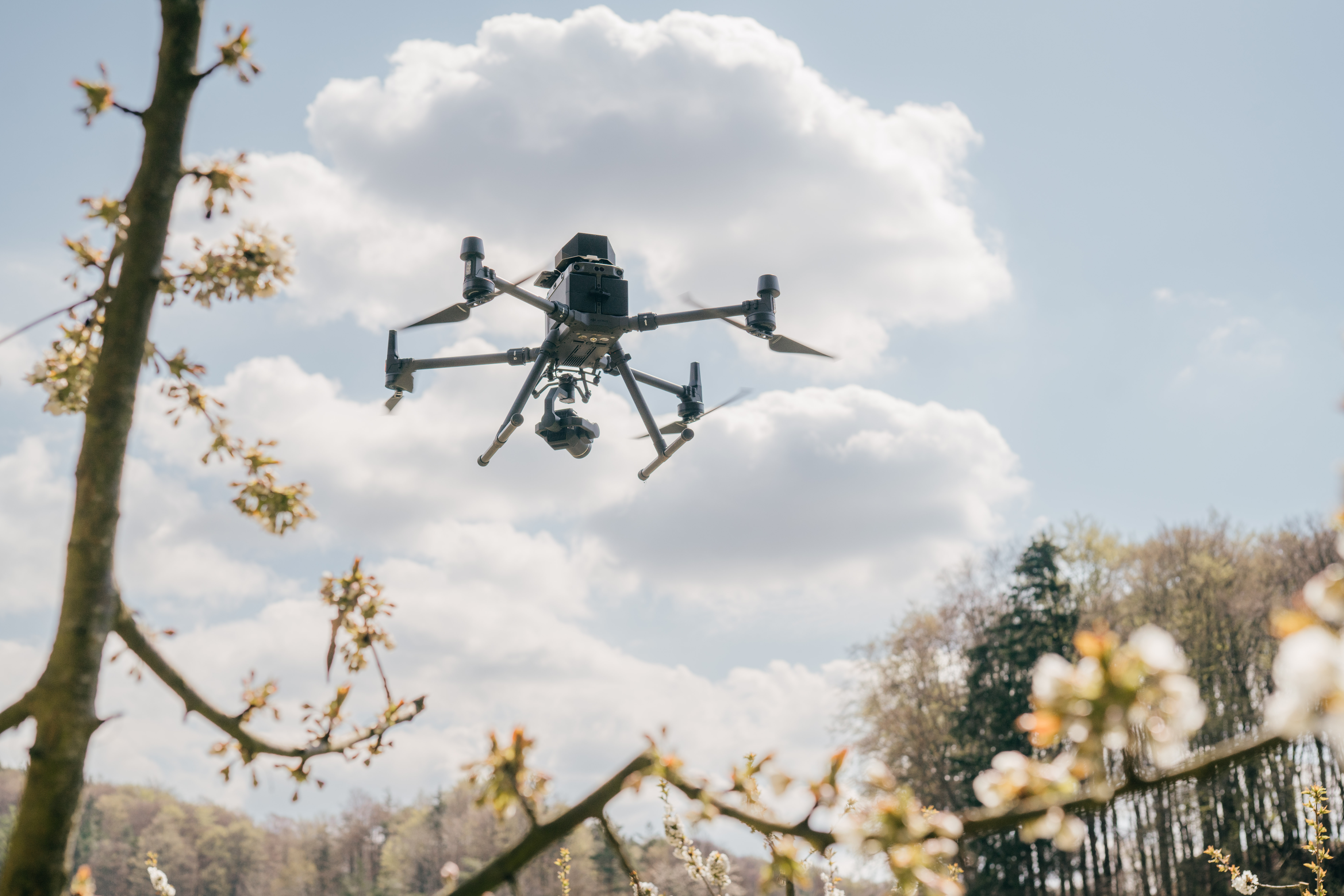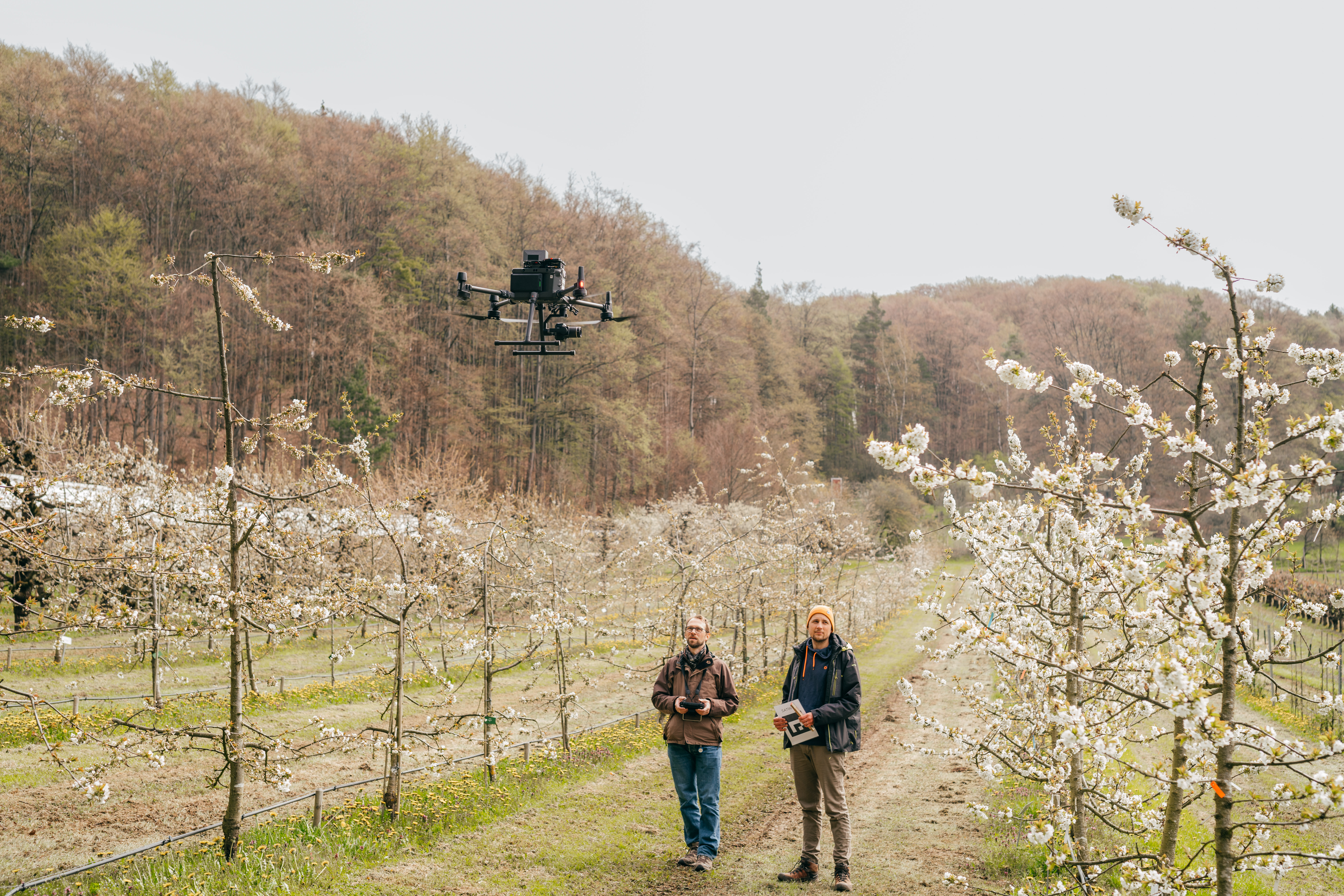As part of the »For5G« project, an application-oriented5G application for fruit growing is being developed. Heart of the project, which is in Franconian Switzerland, is the creation of a »digital twin« of sweet cherry trees. The knowledge gained should be transferred to other fruit varieties in the future. The Fraunhofer Institute for Integrated Circuits IIS, the Friedrich-Alexander-Universität Erlangen-Nürnberg (FAU), the Weihenstephan-Triesdorf University of Applied Sciences (HWST) with the Institute of Horticulture as well as the district of Forchheim are working together to implement the project. The project is being funded with 1.4 million euros by the Federal Ministry of Transport and Digital Infrastructure.
In the course of »Smart Farming«, more and more innovative technologies are being used for sustainable agriculture. This also includes the digitalization and use of 5G applications, which represent a further step on the way to a profound transformation of traditional agriculture. The resulting opportunities for agricultural businesses are considerable: an increase in production, a reduction in costs and an optimized use of resources are to be expected.


